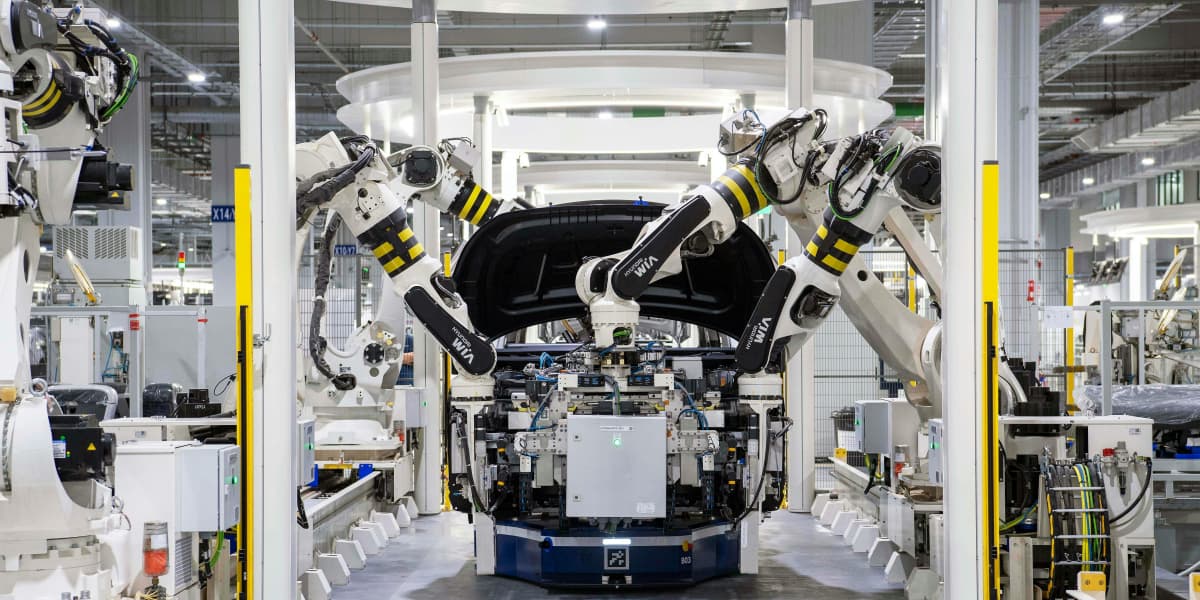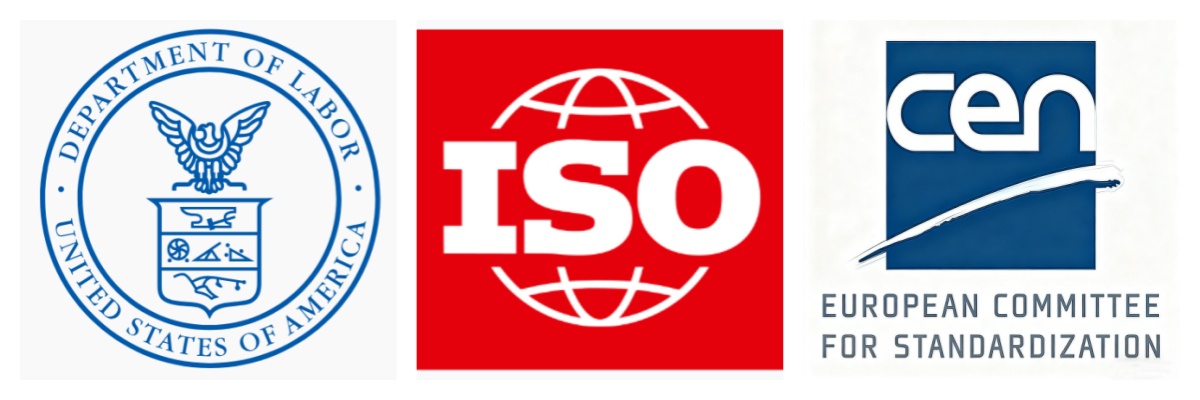工厂工业LED照明指南

不断上涨的能源费用、严格的安全规范以及生产停工迫使设施管理人员重新思考照明问题。
这本工业 LED 照明实用指南 解释了什么是工业 LED 系统、其背后的全球标准和技术、如何选择合适的灯具、设计高效的布局以及筛选可靠的制造商。
您将找到切实可行的规格说明、对比清单和以投资回报率为导向的技巧,帮助您降低能源成本、提高能见度和安全性,并确保运营合规。继续阅读,为您的工厂、仓库或车间制定权威的照明方案。
目录:
1. 什么是工业LED照明?
工业LED照明是指专为工厂、仓库、生产线和大型车间等严苛工作环境设计的高性能照明系统。与注重视觉舒适度和美观性的办公或零售照明不同,工业照明更侧重于在粉尘、振动和温度波动等恶劣条件下的耐用性、亮度和安全性。
“工业”一词通常意味着照明设备必须能够承受高强度运行——通常每天 24 小时运行,安装高度高,覆盖范围广,在这些情况下,精确的可见性对于生产效率和预防事故至关重要。
与传统荧光灯或金属卤化物灯相比,工业LED灯每瓦流明输出更高,启动速度更快,使用寿命也更长。此外,它们所需的维护更少,从而减少了生产设施的停机时间。

工业LED照明主要有以下几种形式:
高棚灯——非常适合仓库和制造工厂的高天花板。
低棚灯——用于车间或装配线等较低空间。
工业LED泛光灯——专为户外场地、装卸区或建筑物周边环境而设计。
工厂和车间照明——为特定任务量身定制的系统,兼具效率、安全性和均匀亮度。
简而言之,工业 LED 照明为更安全、更高效、更经济的工作空间奠定了基础——这是迈向更智能工业运营的关键一步。
2. 了解全球工业照明标准
工业LED照明遵循一系列国际标准,这些标准规定了工作场所照明的亮度、均匀性和安全性。这些标准确保照明能够支持生产力、视觉舒适度和职业安全——这些都是任何工业设施的关键目标。
2.1 主要国际标准
(1)美国照明工程学会 (I ES)
出版了IES 照明手册(第 11 版,2020 年),该手册通常被称为“照明圣经”。它为所有照明设计实践奠定了基础,包括光度测试、眩光控制和能源效率。
IES RP-7(工业照明推荐实践): 提供关于工业设施中照度水平、均匀性和灯具布置的详细指南。→来源:IES 照明手册,第 11 版(2020 年),IES RP-7-17。

(2) 国际照明委员会(CIE)
制定照明质量、显色性和人类视觉反应方面的全球标准。其主要出版物CIE S 008/E:2001——工作场所照明, 影响了许多区域标准。→来源:CIE 中央局,奥地利维也纳。
(3)ISO 8995-1:2024(CIE S 008/E:2001,更新版)
最新的 ISO/CIE 联合标准取代了 ISO 8995-1:2002。它规定了室内工作场所的视觉性能和人体工程学照明要求,重点强调均匀性、眩光限制和任务可见性。→来源:国际标准化组织 (ISO),2024 版。

(4) EN 12464-1:2021(欧洲)
规定了欧盟工业室内环境的最低照度、均匀性、显色性和UGR(统一眩光等级)限值。→来源:欧洲标准化委员会(CEN)。
(5)美国职业安全与健康管理局 29 CFR 1926.56
为不同工作区域设定最低照明标准,以确保工人安全。→来源:美国劳工部职业安全与健康管理局。
2.2 推荐照度水平
应用领域 | 推荐 Lux (lx) | 标准参考 |
仓库通道(存储) | 100–200 勒克斯 | EN 12464-1:2021 / IES RP-7-17 |
装配线或生产线 | 300–750 勒克斯 | ISO 8995-1:2024 / CIE S 008/E |
精密或检测区域 | 750–1000 勒克斯 | IES RP-7-17 / CIE S 008/E |
室外装卸区 | 100–300 勒克斯 | IES RP-7-17 / OSHA 29 CFR 1926.56 |
2.3 照明质量参数
显色指数 (CRI): 建议在工业环境中准确辨别颜色时,显色指数应≥80。
Color Temperature: Neutral to cool white (4000–6000K) enhances focus and visibility in production spaces.
UGR (Unified Glare Rating): Should be below 22 to minimize discomfort glare and visual fatigue.
→ Source: EN 12464-1:2021, ISO 8995-1:2024.
2.4 Certification and Compliance Marks
Certification | Region | What It Confirms |
UL (Underwriters Laboratories) | U.S. | Confirms electrical and fire safety compliance. |
CE (Conformité Européenne) | EU | Meets EU directives for safety, health, and performance. |
DLC (DesignLights Consortium) | North America | Verifies energy efficiency; often required for rebates. |
RoHS (Restriction of Hazardous Substances) | Global | Ensures products are free from hazardous materials like lead or mercury. |
Adhering to these standards guarantees that industrial LED lighting systems are reliable, efficient, and compliant with global safety requirements.
Ceramiclite follows these international benchmarks to deliver lighting solutions that meet professional expectations for performance and compliance worldwide.
3. What Technologies Power Modern Industrial LED Lighting?
Modern industrial LED lighting combines optical engineering, electronics, and smart control systems to deliver bright, durable, and efficient illumination under the toughest working conditions. The following core technologies define today’s high-performance industrial lighting systems.
3.1 High-Lumen LED Chips and Advanced Optics
The foundation of every industrial LED light is its LED chip. Leading manufacturers such as Cree, Nichia, and Osram produce high-lumen, high-efficacy chips (typically 150–200 lm/W) that ensure maximum brightness with minimal power consumption.
Advanced secondary optics—such as precision-molded lenses and reflectors—help shape and direct the beam, minimizing glare and maximizing uniformity in large areas like warehouses and assembly halls.
3.2 Efficient Drivers and Heat Dissipation
LED drivers regulate current flow to maintain consistent light output and protect the system from voltage fluctuations. Industrial-grade drivers are often 0–10V or DALI dimmable, with power factors above 0.95 for energy stability.
Thermal management is equally critical. Aluminum die-cast housings, heat pipes, and multi-fin heat sinks ensure effective heat dissipation, extending the LED’s service life beyond 50,000 hours.
3.3 Flicker-Free, High Refresh Rate Design
Flicker from poor-quality drivers can cause worker eye strain and equipment interference. Industrial LED luminaires now use constant-current, high-frequency drivers (typically ≥25 kHz) to deliver flicker-free, stable light output.
This technology not only improves visual comfort but also ensures camera-friendly performance for machine vision systems and high-speed operations.
3.4 IP and IK Protection for Harsh Environments
Industrial spaces often face dust, moisture, and impact risks. IP (Ingress Protection) and IK (Impact Resistance) ratings define a luminaire’s durability:
IP65–IP67: Dust-tight and water-resistant, ideal for factories or outdoor yards.
IK08–IK10: Resistant to strong mechanical impacts.
Proper sealing, silicone gaskets, and reinforced housings allow reliable operation in environments with oil mist, vibration, or high humidity.
→ Source: IEC 60529 (IP Rating) & IEC 62262 (IK Code).
3.5 Smart Control Compatibility (DALI, Zigbee, Bluetooth, IoT)
Modern industrial LED lights increasingly integrate intelligent control systems.
DALI (Digital Addressable Lighting Interface): Enables precise dimming and zoning control.
Zigbee and Bluetooth Mesh: Allow wireless connectivity for large-scale facility management.
IoT Platforms: Integrate sensors for occupancy, daylight harvesting, and energy monitoring.
Such technologies support smart factory and Industry 4.0 applications—where lighting responds automatically to operational needs, optimizing both comfort and efficiency.
By combining optical precision, electronic stability, mechanical protection, and smart control, modern industrial LED lighting achieves a balance of brightness, reliability, and intelligence — transforming lighting from a passive fixture into an active component of smart industrial infrastructure.
4. What Are the Benefits of Using Industrial LED Lights?
Upgrading to industrial LED lighting is no longer just about modernizing a facility—it’s a proven way to reduce operating costs, improve safety, and achieve sustainability goals. The advantages of LEDs over traditional lighting (like metal halide, fluorescent, or HPS lamps) are measurable and long-term.
4.1 Energy Efficiency and Lower Carbon Footprint
Industrial LED lights convert up to 90–95% of input energy into visible light, compared with only 60–70% for high-intensity discharge (HID) lamps. This results in energy savings of 50–70%, depending on the application.
Many facilities also adopt smart dimming controls and motion sensors, further cutting unnecessary power consumption. Lower energy use directly translates into reduced CO₂ emissions — a key metric in corporate sustainability and ESG reporting.
4.2 Longer Lifespan and Minimal Maintenance
Industrial-grade LEDs typically last 50,000–100,000 hours, compared with 10,000–20,000 hours for fluorescent and metal halide lamps.
Because they contain no filaments or fragile glass, LEDs maintain brightness longer and are less prone to breakage from vibration or impact.
This significantly lowers maintenance frequency and replacement labor costs — especially in high-ceiling environments like warehouses or production halls.
4.3 Brighter and Safer Work Environments
LEDs deliver instant full brightness and superior color rendering (CRI ≥80), improving visibility of tools, labels, and safety markings.
Consistent illumination helps reduce accidents caused by shadows or glare, while flicker-free operation prevents worker eye strain and fatigue.

4.4 Stable Performance in Harsh Conditions
Unlike traditional lamps that degrade in cold or humid environments, industrial LEDs perform reliably between –30°C and +50°C and maintain stable lumen output in high humidity.
Sealed housings with IP65–IP67 protection prevent dust and moisture ingress, making them suitable for factories, foundries, and outdoor facilities.
4.5 ROI and Payback Period
The typical payback period for converting to industrial LED lighting ranges from 1.5 to 3 years, depending on energy costs, operating hours, and regional rebates. After payback, the continued energy and maintenance savings contribute directly to long-term ROI.
By combining high efficiency, durability, and safety, industrial lighting delivers both operational and financial value. It’s not just a lighting upgrade — it’s an investment in productivity, sustainability, and smarter facility management.
5. Which Type of Industrial LED Light Do You Need?
Choosing the right industrial LED light depends on installation height, lighting layout, and work environment. Below are the main categories used across modern industrial facilities — each designed for specific applications and performance needs.
(1) High Bay LED Lights – For Tall Warehouses and Factories
High bay lights are designed for ceilings above 20 feet (6 meters). They provide powerful, uniform illumination for large spaces such as manufacturing workshops, distribution centers, and aircraft hangars. Their deep reflectors and high lumen output ensure clear visibility even from long mounting distances.
Ceramiclite HB01 LED High Bay Light boasts a high luminous efficiency of 160lm/W and an extended lifespan of 102,000 hours (meeting the L80B10 standard at 35℃). It features a protection rating of IP67/IP69K/IK08 and comes with an 8-year warranty.

(2) Low Bay LED Lights – For Mid-Height Industrial Spaces
Low bay lights are used in areas with ceiling heights between 10–20 feet (3–6 meters), such as assembly halls, garages, and small warehouses. They offer wide-beam optics to distribute light evenly without glare, improving comfort and visual accuracy for workers.
(3) LED Shop Lights – For Workstations and Production Lines
Shop lights are typically installed above workbenches, inspection areas, or assembly tables. They emphasize brightness and color accuracy to enhance precision tasks. Slim housing and linkable designs make them easy to mount in rows, ideal for manufacturing or maintenance workshops as LED workshop lights.
(4) LED Strip Lights – For Linear or Continuous Lighting Needs
Strip lights provide linear illumination for corridors, conveyor belts, or narrow aisles. Their continuous layout eliminates dark zones, improving safety in logistics and assembly environments. They are also used under shelves or inside machinery for localized task lighting.
(5) LED Flood Lights – For Outdoor Industrial Yards and Perimeters
Flood lights are built for durability and weather resistance. They illuminate loading docks, parking lots, and construction areas with high-intensity beams, ensuring both visibility and security. Industrial-grade models often feature IP65+ protection and wide operating temperature ranges.
Each of these LED categories serves a distinct role within the industrial ecosystem — from overhead illumination to focused task lighting and exterior security.
When selecting industrial LED light fixtures, consider mounting height, coverage area, environmental conditions, and energy goals. Matching the right LED type to each application ensures optimal visibility, safety, and long-term efficiency for your facility.
6. How to Design an Efficient Industrial LED Lighting Layout?
A well-designed lighting layout is essential to achieve both energy efficiency and worker safety in industrial environments. The goal is to deliver uniform brightness with minimal shadows or glare, ensuring that every area of the workspace is adequately lit without wasting power.
(1) Assess the Space and Ceiling Height
The first step is understanding the dimensions of the facility. Ceiling height determines fixture type and beam angle — for example, high bay lights suit ceilings above 6 meters, while low bay or linear lights are ideal for mid-height areas. Taller spaces require narrower beam angles to project light further, whereas lower ceilings benefit from wider beams for uniform spread.
(2) Plan Fixture Spacing and Mounting Arrangement
Incorrect spacing can create uneven lighting or dark spots. As a general guideline, the distance between fixtures should be about 1 to 1.5 times the mounting height. For example, if lights are mounted 8 meters high, spacing them 8–12 meters apart often provides balanced coverage. Reflective surfaces such as white walls or bright ceilings can help amplify illumination and reduce the number of fixtures needed.
(3) Consider Beam Angle and Reflectance
Beam angle controls how light is distributed across the floor. Narrow beams concentrate brightness in small areas, suitable for tall shelves or high ceilings. Wide beams work better in open areas like workshops. Reflectance from walls, floors, and machinery also affects overall brightness — surfaces with higher reflectivity improve lighting efficiency.
(4) Use Lighting Simulation Tools
Before installation, lighting design software (such as Dialux or Relux) can simulate illumination patterns, predict lux levels, and optimize fixture placement. These simulations ensure compliance with local standards for workspace lighting and help identify potential glare or shadow zones.
(5) Combine Fixture Types for Layered Illumination
A single light type rarely meets all industrial needs. Combining high bay lights for general illumination, task lights for workbenches, and flood lights for outdoor or safety zones creates a layered system that balances brightness, comfort, and energy use.
By aligning fixture choice, spacing, and simulation-based design, industrial facilities can achieve a well-lit, energy-efficient, and visually comfortable environment that enhances both safety and productivity.
7. How to Choose the Best LED Industrial Lights Factory?
Selecting a trustworthy industrial LED lighting factory is critical to ensuring long-term performance, safety, and return on investment. A well-qualified manufacturer provides not just lighting products, but complete technical assurance and service reliability.
(1) Verify Factory Qualification and Production Capability
A reliable LED lighting factory should have its own production line, R&D department, and quality control system. This guarantees consistency in components, assembly, and testing. Unlike resellers who outsource manufacturing, factory-direct suppliers can control every stage of production — from LED chip sourcing to driver calibration — ensuring higher product reliability and stable supply.
(2) Check Certification and Compliance
Authentic quality always comes with recognized certifications. Look for CE, RoHS, UL, ETL, and CB marks, which indicate compliance with international electrical and safety standards. These certifications confirm that the lighting products have passed rigorous performance and safety testing — an essential factor for industrial applications.
(3) Request Samples and Validate Test Reports
Before placing large orders, sample testing is the most direct way to evaluate brightness, color consistency, heat management, and build quality. Reputable manufacturers will provide IES photometric files, LM-79/LM-80 test reports, and warranty documentation upon request.
(4) Evaluate Technical Support and Customization Capability
Every industrial site has unique lighting requirements. Choose a supplier capable of custom design, DIALux simulation support, and flexible mounting solutions. Technical expertise in smart controls (e.g., DALI, Zigbee) and energy modeling is also a sign of a mature manufacturer.
(5) Compare Warranty and After-Sales Service
Warranty length reflects confidence in product durability. The industrial standard is typically 5 years, but leading manufacturers offer 8–10 years. Comprehensive after-sales service and fast response are equally important for long-term operations.
Ceramiclite is a professional industrial LED lighting manufacturer integrating R&D, production, and global sales. The company holds CE, RoHS, CB, CCC, UL, and ETL certifications and provides up to 10 years of warranty for select products — a commitment that exceeds most competitors.
Explore Ceramiclite’s professional-grade industrial lighting solutions today!
8. Future of Industrial LED Lighting — What’s Next?
Industrial LED lighting is evolving from simple illumination to intelligent, data-driven infrastructure that supports energy efficiency, safety, and productivity goals. The next generation of lighting systems will redefine how factories and warehouses operate.
(1) Smart Industrial Lighting Systems
The most significant innovation is the adoption of smart sensors, IoT platforms, and automated control systems. These allow lights to adjust brightness based on motion, daylight, or occupancy levels — reducing unnecessary power use. Integration with protocols like DALI-2, Zigbee, and Bluetooth Mesh enables centralized control and remote monitoring, helping facility managers improve energy efficiency by up to 60% (source: U.S. Department of Energy, 2024).
(2) 与可再生能源的融合
工厂正越来越多地将LED系统与太阳能和可再生能源解决方案相结合。智能控制器可以将照明时间表与现场能源生产同步,帮助企业在降低运营成本的同时实现净零排放和ESG目标 。
(3) 以人为本的照明,打造更佳的工作环境
除了节能之外,未来的照明设计还将注重提升人体舒适度并协调昼夜节律。通过全天调节色温和亮度,以人为本的照明可以提高注意力、减轻疲劳并增强安全性——这一趋势得到了国际照明委员会 (CIE) 和 WELL 建筑标准的支持。
(4) 预测性维护和数据分析
人工智能驱动的分析技术很快就能预测部件故障,防患于未然。这将减少停机时间,优化维护计划,确保大型设施的持续运行。
工业LED照明的未来是智能的、可持续的、以人为本的——这是智能工厂的基础。
→ 了解更多信息,请参阅我们的指南:《2025 年工业 LED 照明的新趋势》
9. 结论
工业LED照明不再仅仅关乎照明——它更关乎效率、智能和可持续性。通过升级到现代LED系统,工厂和仓库可以降低能耗,改善工作环境,并通过减少维护和实现更智能的控制,获得长期的投资回报。
随着各行业向自动化和碳减排方向发展,LED 技术成为面向未来的设施的支柱。
探索 Ceramiclite 的专业级工业照明解决方案——专为高性能、高可靠性和更智能的制造而设计。
_thumb.jpg)

